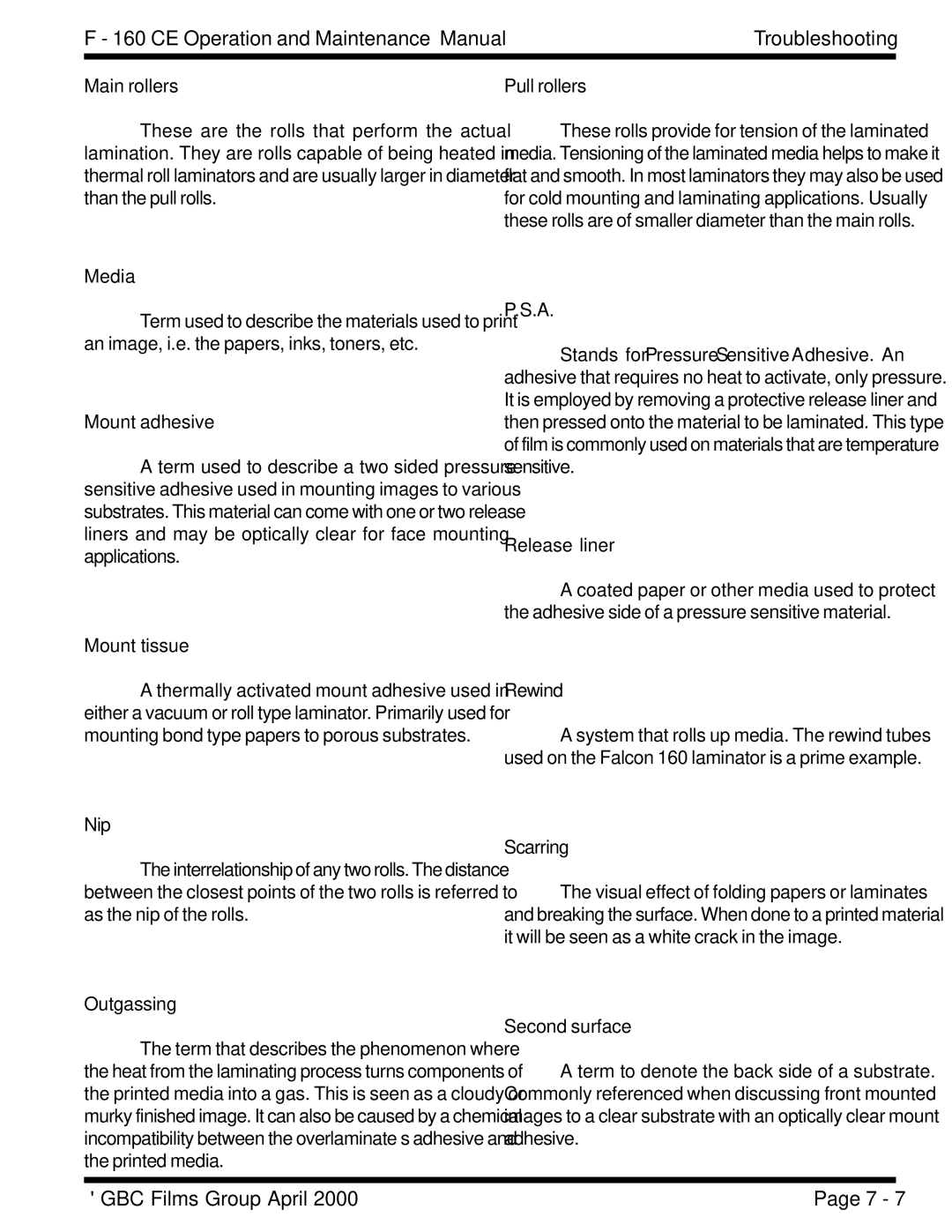F - 160 CE Operation and Maintenance Manual | Troubleshooting |
|
|
Main rollers | Pull rollers |
These are the rolls that perform the actual lamination. They are rolls capable of being heated in thermal roll laminators and are usually larger in diameter than the pull rolls.
Media
Term used to describe the materials used to print an image, i.e. the papers, inks, toners, etc.
Mount adhesive
A term used to describe a two sided pressure sensitive adhesive used in mounting images to various substrates. This material can come with one or two release liners and may be optically clear for face mounting applications.
Mount tissue
These rolls provide for tension of the laminated media. Tensioning of the laminated media helps to make it flat and smooth. In most laminators they may also be used for cold mounting and laminating applications. Usually these rolls are of smaller diameter than the main rolls.
P.S.A.
Stands for Pressure Sensitive Adhesive. An adhesive that requires no heat to activate, only pressure. It is employed by removing a protective release liner and then pressed onto the material to be laminated. This type of film is commonly used on materials that are temperature sensitive.
Release liner
A coated paper or other media used to protect the adhesive side of a pressure sensitive material.
A thermally activated mount adhesive used in either a vacuum or roll type laminator. Primarily used for mounting bond type papers to porous substrates.
Nip
The interrelationship of any two rolls. The distance between the closest points of the two rolls is referred to as the nip of the rolls.
Rewind
A system that rolls up media. The rewind tubes used on the Falcon 160 laminator is a prime example.
Scarring
The visual effect of folding papers or laminates and breaking the surface. When done to a printed material it will be seen as a white crack in the image.
Outgassing
The term that describes the phenomenon where the heat from the laminating process turns components of the printed media into a gas. This is seen as a cloudy or murky finished image. It can also be caused by a chemical incompatibility between the overlaminate’s adhesive and the printed media.
Second surface
A term to denote the back side of a substrate. Commonly referenced when discussing front mounted images to a clear substrate with an optically clear mount adhesive.
© GBC Films Group April 2000 | Page 7 - 7 |
